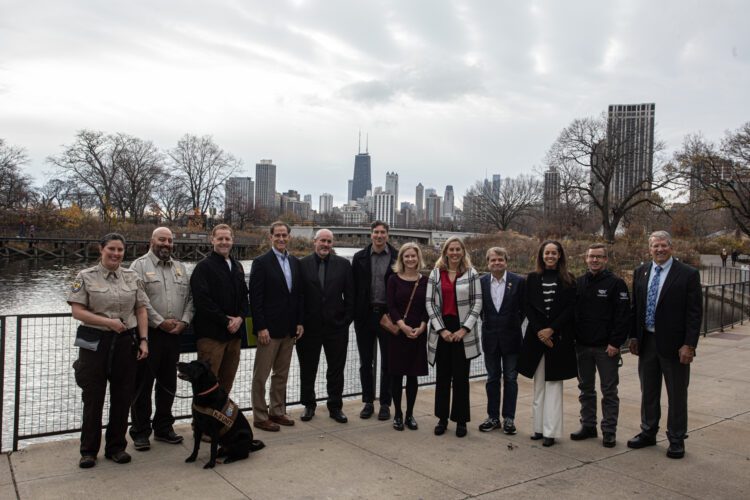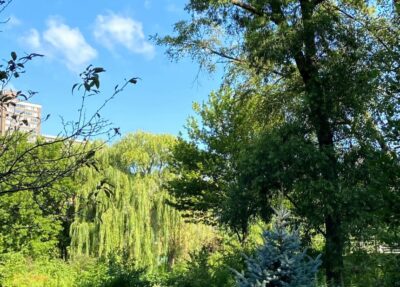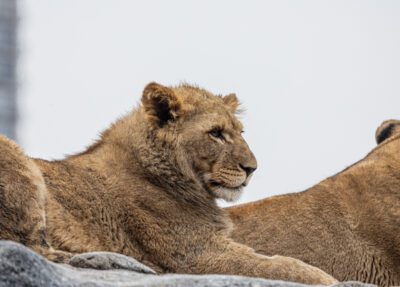Lincoln Park Zoo recently announced a new partnership with Monitor Conservation Research Society, an international nonprofit organization dedicated to investigating and fighting the illegal wildlife trade and the drivers behind it, especially where it affects lesser-known species and poses a threat to populations around the world.
“This partnership really is one of a kind for North American zoos,” Vice President of Conservation & Science S. Sunny Nelson said in last week’s press conference. “Lincoln Park Zoo will support Monitor Conservation Research Society using science and data-backed findings to better understand these issues that are impacting species that are at high risk for illegal wildlife tracking.”
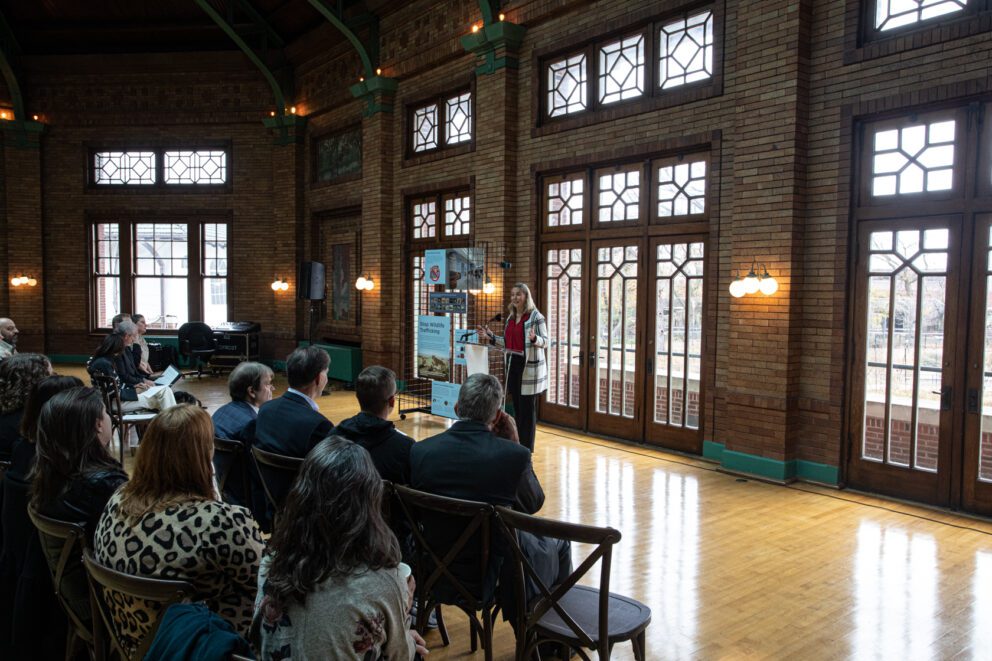
The move is one more step the zoo is taking to assist in the important fight against wildlife trafficking — and it certainly isn’t the only one. This is a large, complicated issue that requires attacks on multiple fronts. As such, Lincoln Park Zoo is involved in numerous ways, along with partners like Monitor, the U.S. Fish and Wildlife Service, the Association of Zoos and Aquariums, O’Hare International Airport, and many others.
The Problem of Wildlife Trafficking
The trade of animal products is a multi-billion-dollar criminal activity: the fourth-most-profitable transnational crime in the world (behind trafficking in drugs, arms, and humans). Not only is wildlife trafficking a conservation issue that impacts animals, it’s a health and safety issue for humans.
Diseases are spread through animals, as many people learned during the COVID-19 pandemic. This means that illegal trade, with its lack of safety protocols and screenings, increases the risks of illness in both humans and wildlife. But wildlife trafficking also fuels corruption, threatens the rule of law, and destabilizes communities.
Wildlife traffickers operate around the world. More and more, places like North America are becoming major sources as well as destinations for the illegal wildlife trade, with many species of reptiles and amphibians, especially, becoming victim to illegal traders. Among the 10 most trafficked species, according to various reports, are various kinds of turtles and birds.
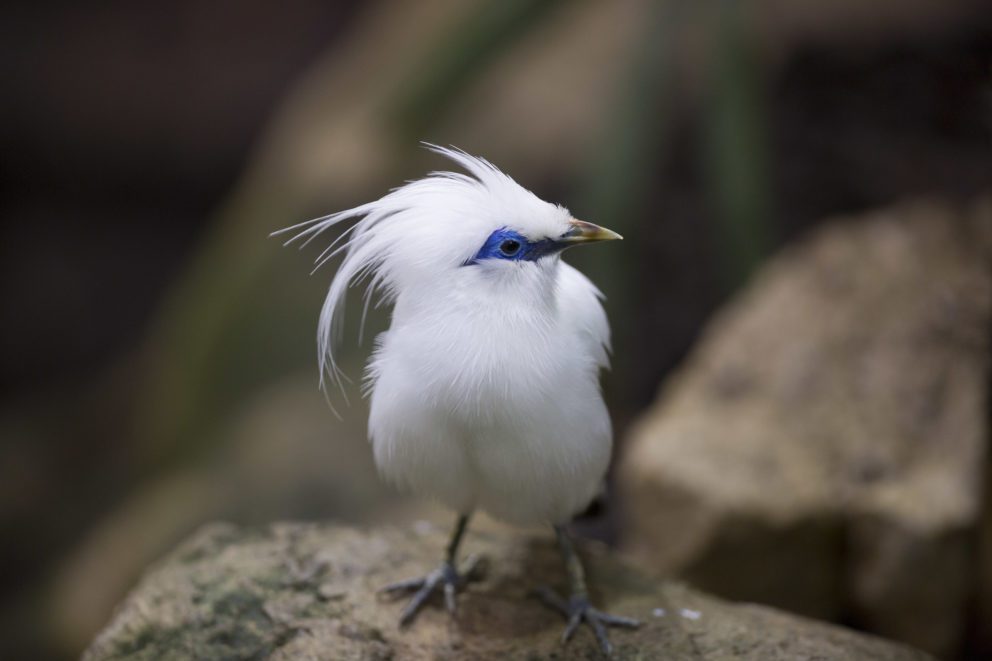
“Species in North America are increasingly showing up in markets in Asia,” Dr. Chris R. Shepherd, founder and executive director of Monitor, said at the press conference. “Just last week there was a seizure of armadillo in Malaysia, North Americans songbirds are showing up in Europe, North American turtles are showing up in Hong Kong and other places, so it really is a problem we want to address.”
A recent five-year analysis from the USFWS found that it experienced 834 cases of seized or abandoned live wildlife that were refused clearance into the country. These shipments included more than 48,700 live specimens. Los Angeles is a major hotspot, of course, with a high volume of both legal and illegal cargo, but O’Hare International Airport is also a busy waystation for travelers and goods coming from out of the country—and unfortunately, not all of them are legal.
Wildlife Heroes and Lincoln Park Zoo
“Lincoln Park Zoo has been in the business of saving wildlife for many years, from introducing ornate box turtles and trumpeter swans in the Midwest to researching great apes such as western lowland gorillas and chimpanzees in the Congo, preserving wildlife in wild places, which is core to who we are and to our mission,” said Nelson.
As part of that mission, the zoo has long been committed to the fight against wildlife trafficking. This has manifested itself in numerous ways, including the new partnership with Monitor as well as the following:
Wildlife Trafficking Installation at O’Hare International Airport
As an important international transportation hub, Terminal 5 at O’Hare is unfortunately a main route for wildlife traffickers. But now, it’s also the home to an exhibit explaining the evils of wildlife trafficking and spreading awareness about the types of animals that have been trafficked through the airport. The exhibit offers some actions travelers can take as they visit other countries to make sure they aren’t supporting trafficking activities. Find out more here, take the pledge, and check out the exhibit on our Instagram page:
Providing Rhino Horns to Train Wildlife Detection Dogs
Rhino horns are made from keratin, which is the same material that makes up human hair and nails. However, in some cultures, rhino horn has taken on mystical properties, which makes it a valuable commodity that leads to the deaths of rhinos in already-endangered populations.
Lincoln Park Zoo is currently home to three eastern black rhinos, and occasionally their horns need trimming. Fortunately, trimming horns made from keratin doesn’t hurt the animals. Afterward, zoo staff members provide horn segments to the USFWS so they can train wildlife detection dogs, like 7-year-old Beans, to locate such items in luggage, boxes, and other containers that come through O’Hare Airport.
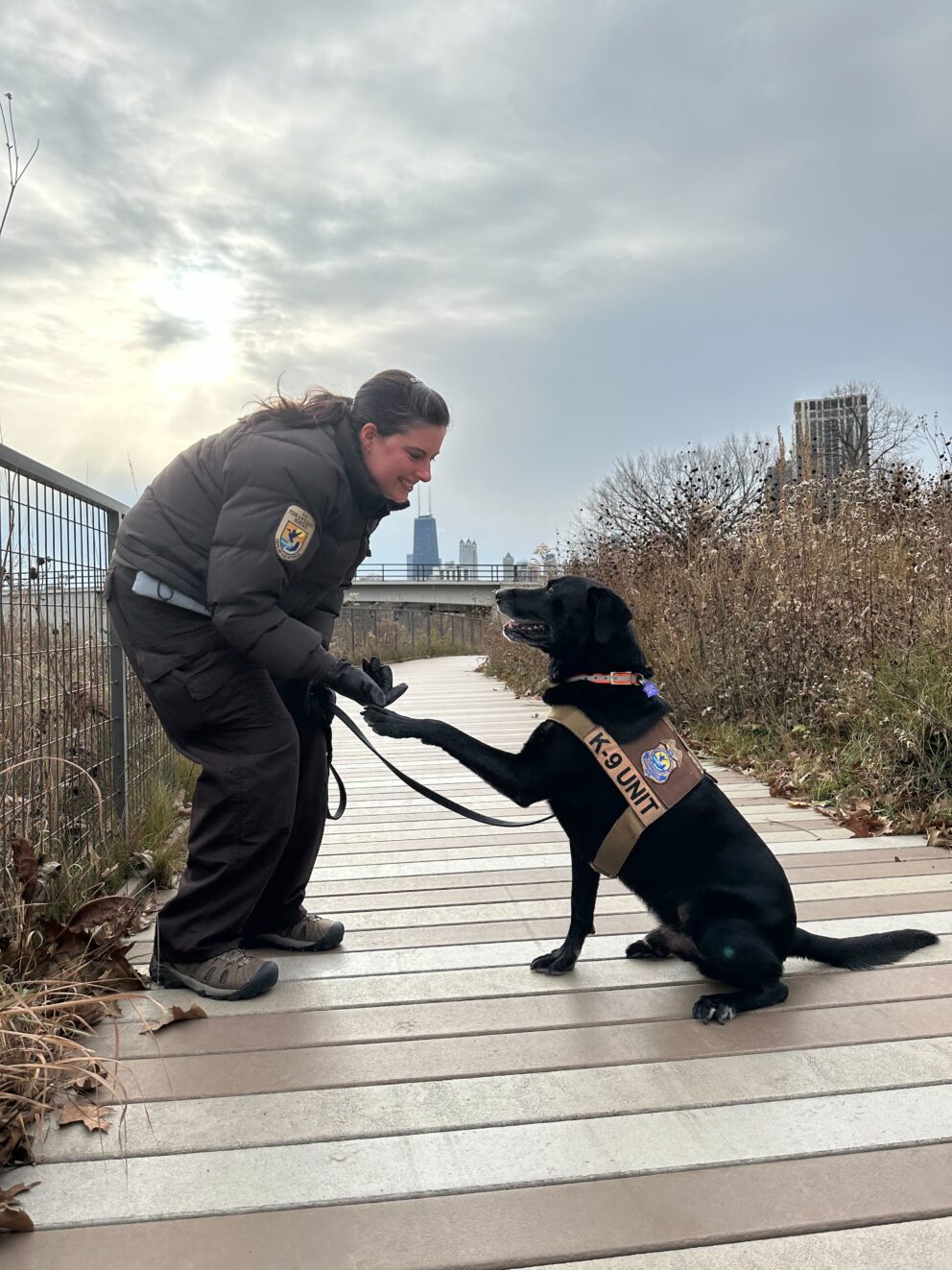
Courtesy of Cait Mobley
Partnering with AZA’s Wildlife Trafficking Alliance
Lincoln Park Zoo works with the Association of Zoos and Aquarium’s Wildlife Trafficking Alliance, a coalition of companies, nonprofits, and AZA-accredited institutions cooperating to reduce the illegal trade of wildlife and products made from wildlife. The organization works to reduce consumer demand, advance laws and regulations to stem trafficking, and provide a response protocol for caring for confiscated animals.
“Dr. Megan Ross and the entire Lincoln Park Zoo are engaged and dedicated members of the association, leaders among leaders in our community, advancing conservation science, education and recreation,” said AZA President and CEO Dan Ashe. “Lincoln Park Zoo is a partner in AZA’s WTA…supporting anti-wildlife-trafficking initiatives like those we’re celebrating here today.”
Providing Homes for Trafficked Animals
One of the issues in wildlife trafficking is that, when a shipment of animals is intercepted en route, many of them may be sick or injured. They need veterinary care, housing, and expert management. Lincoln Park Zoo helps provide that.
In fact, over the course of the past 25 years, the zoo has done so for 272 individual animals. Most have been reptiles and amphibians—perhaps because, as Curator Dan Boehm says, these animals are more resilient when it comes to travel in luggage, as cargo, or attached to people in unusual ways. Some are even “disguised” as less endangered species they look similar too.
“The unfortunate reality is that, for a multitude of reasons, these animals may be in very poor physical condition when they are confiscated,” said Boehm. “Or, if not initially, they may be within days or weeks, which is why it is so important they get into a proper housing situation, with excellent veterinary care, ideally within 24 or 48 hours of the seizure—because that can have a profound impact on their long-term outcome and perhaps even their immediate survival.”
Take Action With Us
Boehm noted that the issue of wildlife trafficking can seem overwhelming, but the right way to tackle a problem of such magnitude is to break it down and do it in pieces. And as Lincoln Park Zoo President and CEO Megan R. Ross, Ph.D., said during the announcement, “Conservation is not a one-man shop. Conservation requires a lot of effort from a lot of different individuals to actually affect change for wildlife.”
That means all of us, doing what we can and spreading the word.
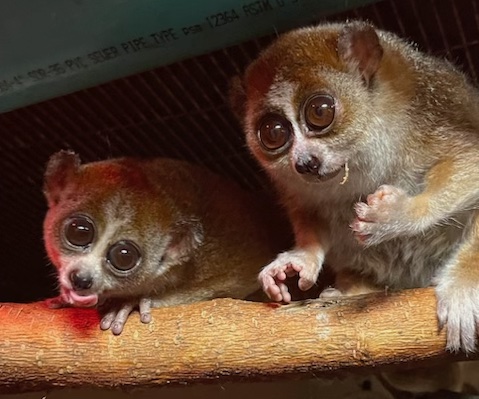
With this in mind, here are three things you can do to help save wildlife as you consume items, travel, and peruse social media:
- Pause Before Posting images of animals as pets or performers. If you are traveling, do not pose for photos with animals or pay to see ones that live in poor conditions. As with the slow loris (Link here), such images can result in higher illegal demand with negative effects on their welfare and conservation.
- Ask For the Origin of items you see for sale. If you see animal items or products made from animal items for sale, be an inquisitive and smart shopper. Ask about local laws regarding sale and export, find out where the item came from, and don’t purchase if you don’t like the answers. This reduces the chance that you’ll unknowingly support practices that harm wildlife.
- Spread the Word! Whether you’re doing it through word-of-mouth or social media, you can help by raising awareness of the issue with your friends and family.
